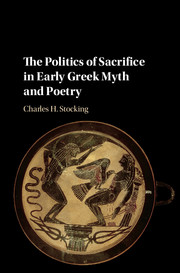Book contents
- The Politics of Sacrifice in Early Greek Myth and Poetry
- The Politics of Sacrifice in Early Greek Myth and Poetry
- Copyright page
- Contents
- Illustrations
- Acknowledgements
- Note on Abbreviations
- Introduction
- Chapter 1 Anger and Honorary Shares
- Chapter 2 Sacrifice, Succession and the Politics of Patriarchy
- Chapter 3 The Desire of a God
- Chapter 4 Cities where Men Sacrifice
- Conclusion
- Bibliography
- Index Locorum
- Subject Index
- References
Bibliography
Published online by Cambridge University Press: 13 April 2017
- The Politics of Sacrifice in Early Greek Myth and Poetry
- The Politics of Sacrifice in Early Greek Myth and Poetry
- Copyright page
- Contents
- Illustrations
- Acknowledgements
- Note on Abbreviations
- Introduction
- Chapter 1 Anger and Honorary Shares
- Chapter 2 Sacrifice, Succession and the Politics of Patriarchy
- Chapter 3 The Desire of a God
- Chapter 4 Cities where Men Sacrifice
- Conclusion
- Bibliography
- Index Locorum
- Subject Index
- References
- Type
- Chapter
- Information
- The Politics of Sacrifice in Early Greek Myth and Poetry , pp. 173 - 192Publisher: Cambridge University PressPrint publication year: 2017



